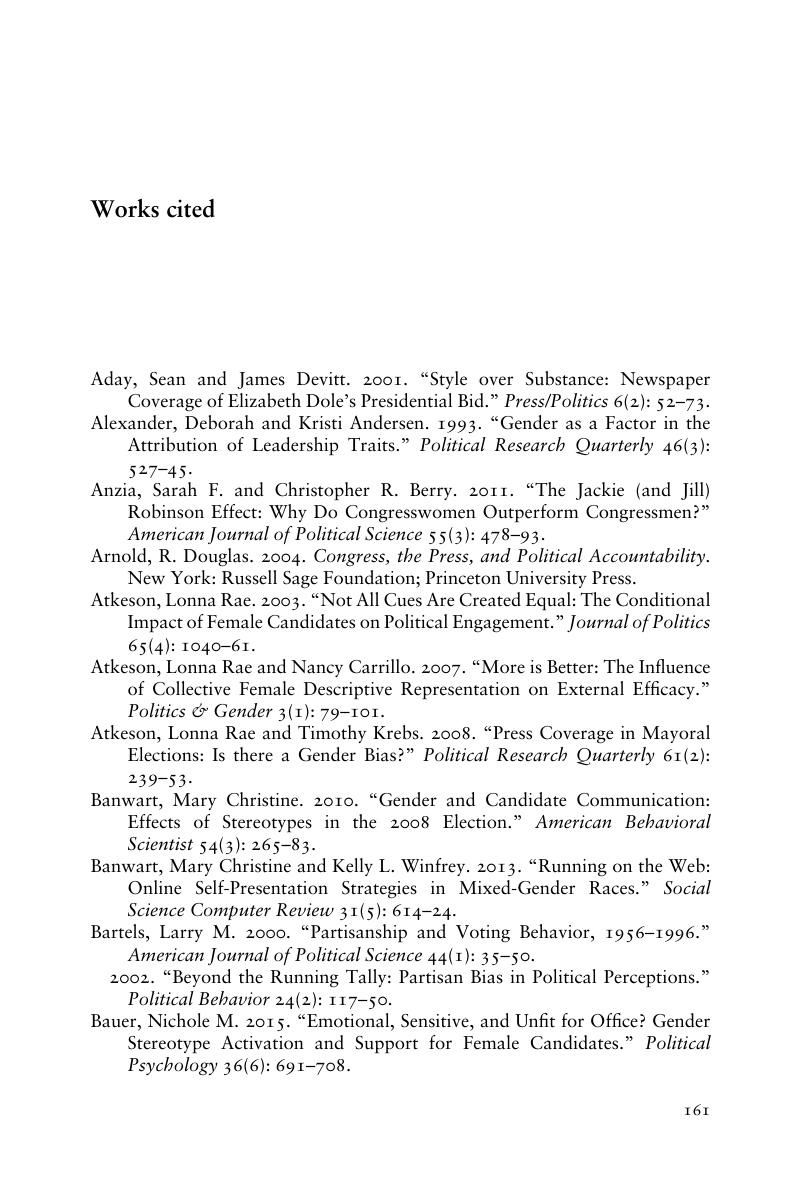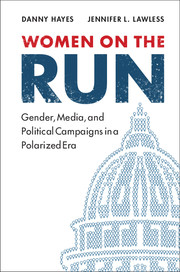Book contents
- Frontmatter
- Contents
- List of figures
- List of tables
- Acknowledgments
- 1 Gender, myth, and reality on the campaign trail
- 2 Rethinking and reassessing gender differences on the campaign trail
- 3 That's what she said, and so did he
- 4 Sex is no story
- 5 The party, not the person
- 6 The origins and implications of perceptions of gender bias
- Appendices
- Works cited
- Index
- References
Works cited
Published online by Cambridge University Press: 05 May 2016
- Frontmatter
- Contents
- List of figures
- List of tables
- Acknowledgments
- 1 Gender, myth, and reality on the campaign trail
- 2 Rethinking and reassessing gender differences on the campaign trail
- 3 That's what she said, and so did he
- 4 Sex is no story
- 5 The party, not the person
- 6 The origins and implications of perceptions of gender bias
- Appendices
- Works cited
- Index
- References
Summary

- Type
- Chapter
- Information
- Women on the RunGender, Media, and Political Campaigns in a Polarized Era, pp. 161 - 176Publisher: Cambridge University PressPrint publication year: 2016



